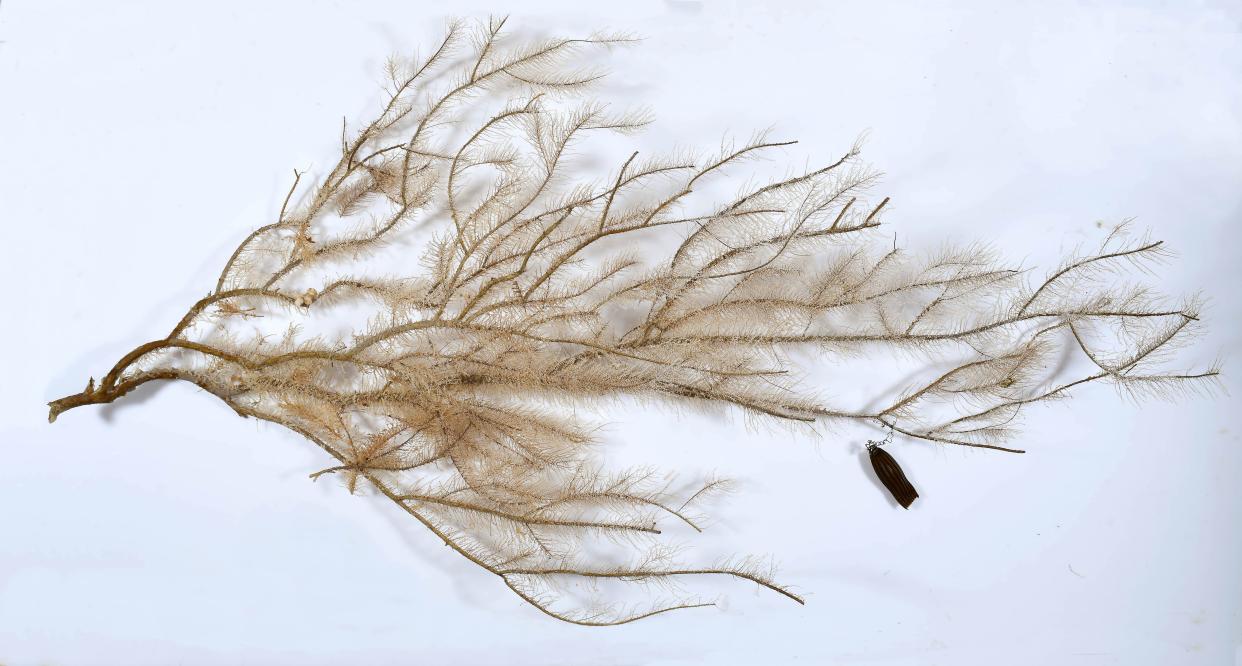Meet the demon catshark, a new deep water dwelling species with ghostly white eyes discovered off the coast of Australia

A new species called the demon catshark has been discovered off the coast of Australia.
The first found of its kind, the shark has ghostly white eyes and is likely an opportunistic hunter.
A researcher in the discovery told Insider they tracked 40-year-old egg sacks to identify the shark.
After 40 years of searching, researchers at the CSIRO Australian National Fish Collection have finally identified the mysterious creature leaving unique egg sacks in the deep water off the country's coast, discovering a new species in the process.
Enter: the demon catshark, or apristurus ovicorrugatus. Only one specimen of the small ocean shark, characterized by its bright white eyes, smooth dark skin, and uniquely ridged egg sack, has been found.
Thankfully, that specimen was a female, about 47 centimeters long, with a fully intact egg pouch. It allowed researchers to positively match the species with mysterious sacks that had plagued them for decades. Dr. Will White, a senior research scientist at the ANFC who led the team that made the discovery, told Insider they quickly realized they had found a new piece in "a jigsaw puzzle with 100 other pieces missing."
White told Insider the team worked backwards to identify the demon catshark based on sacks found off the Australian coast and cataloged 40 years ago by the National Fish Collection, tracking the shark's possible breeding locations until they caught a living specimen of the new breed.

"This particular species has got the black pupil, and then it's got a bright white iris around it that stands out quite a lot for deep water sharks, which normally have very dark eyes, dark green or almost black eyes," White told Insider.
Initially, White's research group believed they had found a known species fitting a similar description that also has a white iris but determined the demon catshark was genetically unique.
"It's almost like this different evolutionary arm within this group of sharks — and we don't really know why they have this white iris," White said. "It could be something to do with attracting prey or something like that. We just really don't know."
Not much is yet known about this species of catshark, White said. However, he noted that it swims in slightly shallower depths than other catsharks — approximately 1,000 meters deep, likely along ancient coastlines underwater. Like other catsharks, however, White expects it to be an opportunistic hunter, feeding on various crustaceans and fish as they pass by.
Generally, catsharks are among the smaller species of sharks, averaging lengths of less than two and a half feet, according to PBS, and are found in warm ocean waters. They have between 40 and 110 rows of spiny teeth and, as slow-moving carnivores, tend to feed on small fish and invertebrates such as octopi and squid.

While the shark's Latin name is an homage to its ridged egg sack, its colloquial name references its dark skin and haunting eyes — the perfect camouflage to sneak up on unsuspecting prey in deep, dark water.
"In deep water it'd almost just be like this ghost-like demon thing that would just be swimming really quietly through the water," White told Insider. "I can imagine, if you're a smaller prey out there, it would look like a demon coming in to get you."
The identification of the demon catshark is a landmark discovery for marine taxonomists. White said the discovery highlights how little is known about ocean biodiversity.
"You know, sharks and rays, they're large animals compared to most other groups, and a lot of people assume we know everything about all the sharks and rays, for example, whereas we're still finding new species every year," White told Insider. "And if you follow that down the chain from there, once you get to a smaller fish, there's a hell of a lot more of them. And then once you start looking at invertebrates, crustaceans, and mollusks — there's so much we don't understand."
Read the original article on Business Insider
